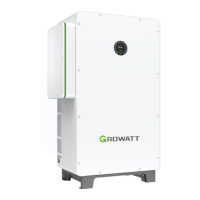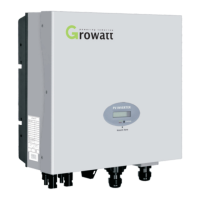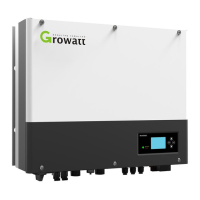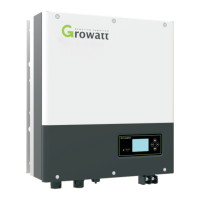2> Charge the battery from the grid through a rectifier circuit;
3> Convert the battery power into AC power through the inverter circuit to provide power to
critical loads connected to the LOAD port.
Fig 3.10 WIT 50-100K-AE-US, WIT 50-100K-AU-US Grid-connected conceptual diagram
3.4.4 Operating Principle of WIT 50-100K-HE-US and WIT 50-100K-HU-US
1> The hybrid inverter receives DC inputs from PV strings which go through the MPPT routes.
The DC power is then converted into AC power through the inverter circuit to power the loads and
feed power into the grid;
2> The PV strings can supply power to charge the battery through the MPPT routes;
3> Convert battery power to AC power supplies for the loads and feeding to the grid;
4> Charge the battery from the grid through a rectifier circuit;
5> Convert the DC power from PV strings and the battery power into AC power through the
inverter circuit to power critical loads.
NOTE: WIT 50K-HE/-HU-US models have 7 MPPT routes. WIT 63K-HE/-HU models have 8 MPPT routes.
WIT 75K-HE/-HU-US and WIT 100K-HE/-HU-US models have 10 MPPT routes.
Fig 3.11 WIT 50-100K-HE-US, WIT 50-100K-HU-US Grid-connected conceptual diagram
3.5 Storing the WIT Inverter
1> Put the WIT Inverter in the original package and place it in a dry and well-ventilated place.
2> Keep the storage temperature from –30°C to +70°C and the humidity from 0%–95% RH.
3> A maximum of three WIT Inverters can be stacked. Do not stack the inverters without package.
4> If the WIT Inverter has been long-term stored, inspections and tests should be conducted by
qualified personnel before installation.

